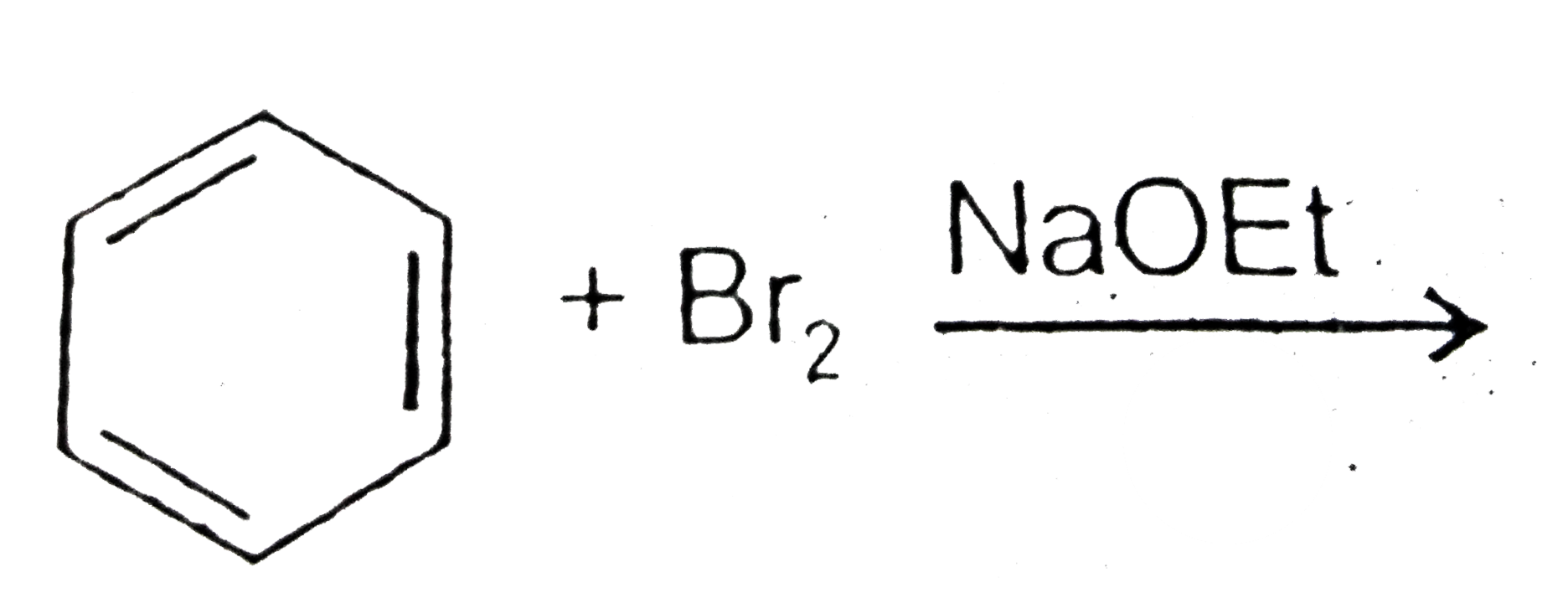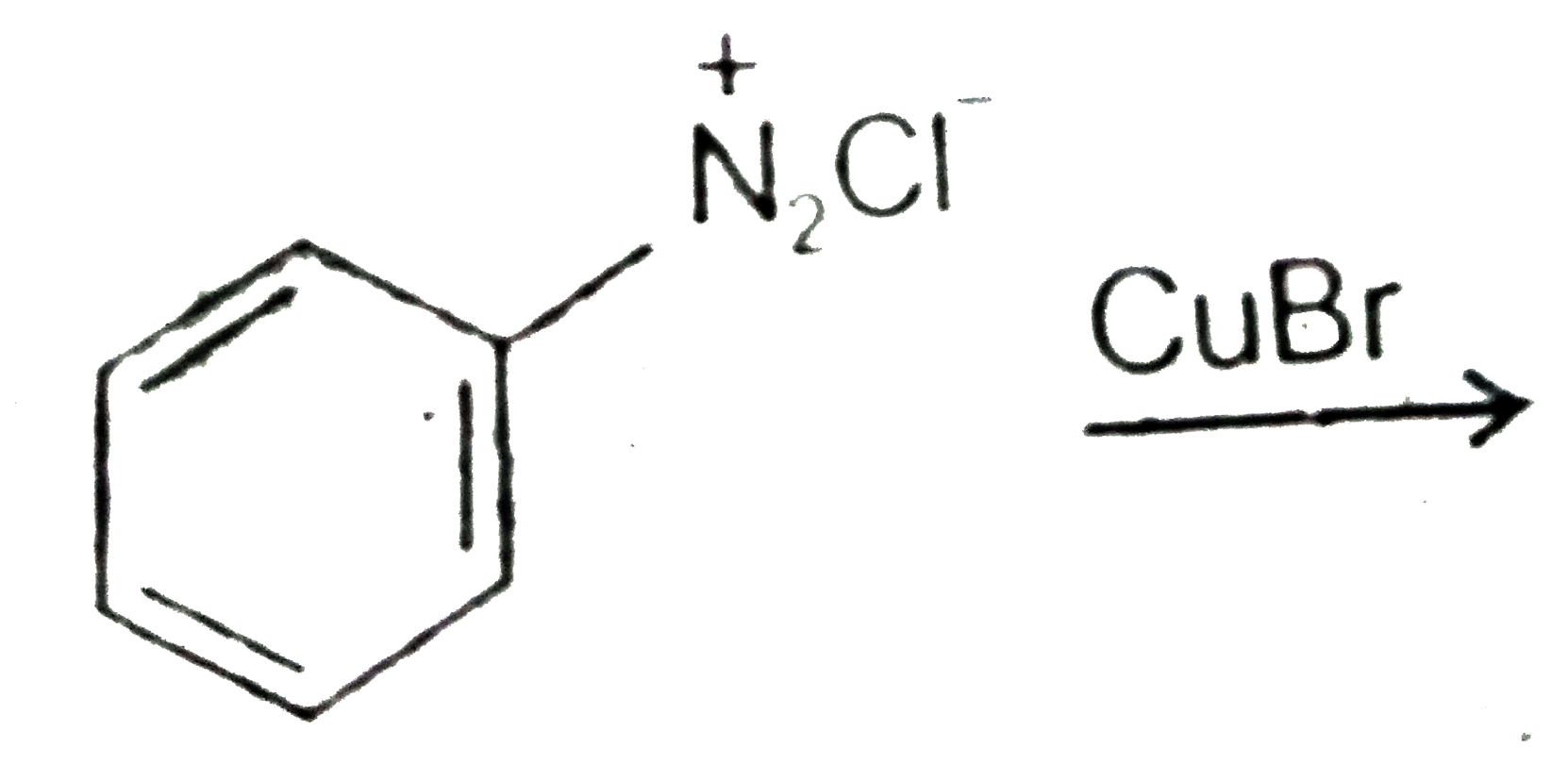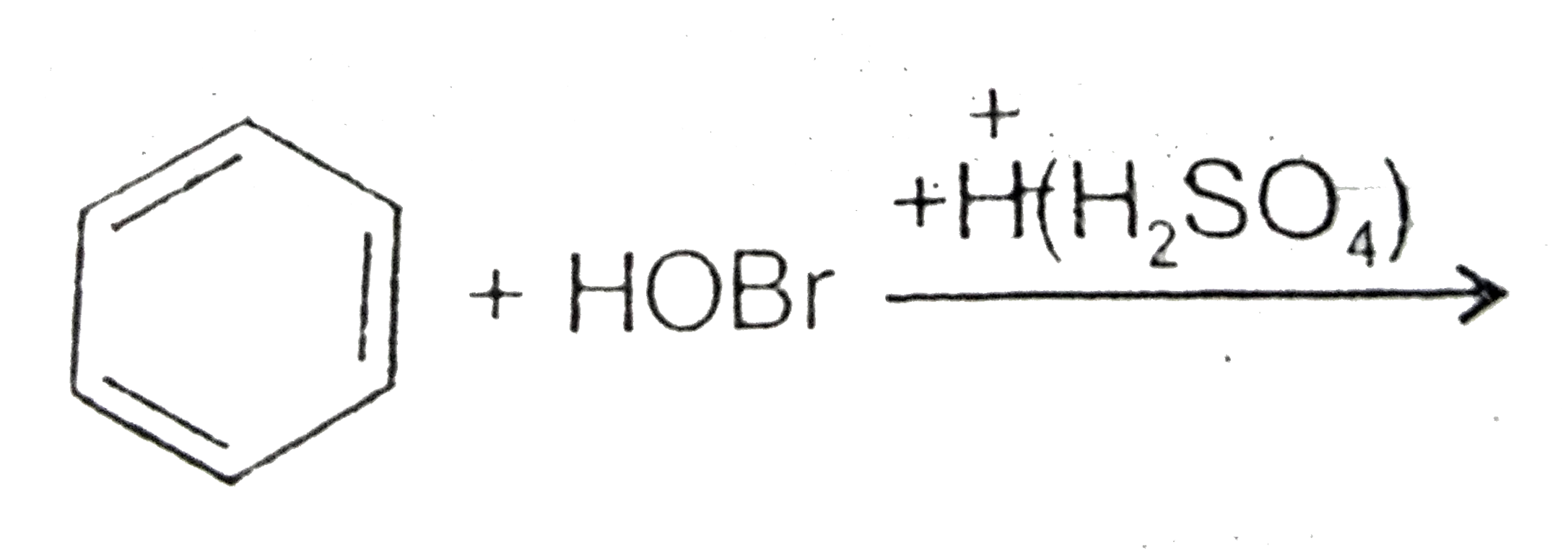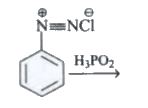Which of the following reactions can be used to introduce bromine atom in benzene ring ?




The correct Answer is:(1,3,4)
To determine which reactions can introduce a bromine atom into a benzene ring, we will analyze each reaction step by step.
Step 1: Analyze the First Reaction
- Reaction: Benzene + BrCl (in the presence of FeCl3)
- Mechanism: This is an electrophilic aromatic substitution reaction. The FeCl3 acts as a catalyst and helps generate the electrophile (Br+). The Br+ then attacks the benzene ring, substituting a hydrogen atom for a bromine atom.
- Product: A brominated benzene ring is formed.
Conclusion: This reaction can introduce a bromine atom into the benzene ring. (Correct)
Step 2: Analyze the Second Reaction
- Reaction: Benzene + Br (in the presence of sodium ethoxide, NaOEt)
- Mechanism: Initially, bromine adds to the benzene ring, but then the sodium ethoxide facilitates a dehydrohalogenation reaction. This means that instead of forming a brominated benzene, the reaction results in the formation of benzene without the bromine.
- Product: No brominated product is formed; only benzene is obtained.
Conclusion: This reaction does not introduce a bromine atom into the benzene ring. (Incorrect)
Step 3: Analyze the Third Reaction
- Reaction: N2Cl + CuBr
- Mechanism: This is known as the Sandmeyer reaction. The N2Cl can generate a bromine electrophile which can then substitute a hydrogen atom on the benzene ring.
- Product: A brominated benzene ring is formed.
Conclusion: This reaction can introduce a bromine atom into the benzene ring. (Correct)
Step 4: Analyze the Fourth Reaction
- Reaction: Benzene + HOBR
- Mechanism: This is another electrophilic substitution reaction. The HOBR can provide the Br+ electrophile, which will substitute a hydrogen atom on the benzene ring.
- Product: A brominated benzene ring is formed.
Conclusion: This reaction can introduce a bromine atom into the benzene ring. (Correct)
Final Conclusion
The reactions that can introduce a bromine atom into the benzene ring are:
1. Benzene + BrCl (in the presence of FeCl3)
3. N2Cl + CuBr (Sandmeyer reaction)
4. Benzene + HOBR
Thus, the correct options are 1, 3, and 4.
---
- Reaction: Benzene + BrCl (in the presence of FeCl3)
- Mechanism: This is an electrophilic aromatic substitution reaction. The FeCl3 acts as a catalyst and helps generate the electrophile (Br+). The Br+ then attacks the benzene ring, substituting a hydrogen atom for a bromine atom.
- Product: A brominated benzene ring is formed.
- Reaction: Benzene + Br (in the presence of sodium ethoxide, NaOEt)
- Mechanism: Initially, bromine adds to the benzene ring, but then the sodium ethoxide facilitates a dehydrohalogenation reaction. This means that instead of forming a brominated benzene, the reaction results in the formation of benzene without the bromine.
- Product: No brominated product is formed; only benzene is obtained.
- Reaction: N2Cl + CuBr
- Mechanism: This is known as the Sandmeyer reaction. The N2Cl can generate a bromine electrophile which can then substitute a hydrogen atom on the benzene ring.
- Product: A brominated benzene ring is formed.
- Reaction: Benzene + HOBR
- Mechanism: This is another electrophilic substitution reaction. The HOBR can provide the Br+ electrophile, which will substitute a hydrogen atom on the benzene ring.
- Product: A brominated benzene ring is formed.
The reactions that can introduce a bromine atom into the benzene ring are:
1. Benzene + BrCl (in the presence of FeCl3)
3. N2Cl + CuBr (Sandmeyer reaction)
4. Benzene + HOBR
Topper's Solved these Questions
- HALOALKANES AND HALOARENES BOOK - AAKASH INSTITUTE ENGLISHCHAPTER - HALOALKANES AND HALOARENES EXERCISE - Assignment (Section - D) (Linked Comprehension Type Question )
8 Videos
- HALOALKANES AND HALOARENES BOOK - AAKASH INSTITUTE ENGLISHCHAPTER - HALOALKANES AND HALOARENES EXERCISE - Assignment (Section - E) ( Assertion - Reason type Questions )
7 Videos
- HALOALKANES AND HALOARENES BOOK - AAKASH INSTITUTE ENGLISHCHAPTER - HALOALKANES AND HALOARENES EXERCISE - Assignment (Section - B ) ( Objective Type Question(One option is correct ))
36 Videos
- GENERAL PRINCIPLES AND PROCESSES OF ISOLATION OF ELEMENTSBOOK - AAKASH INSTITUTE ENGLISHCHAPTER - GENERAL PRINCIPLES AND PROCESSES OF ISOLATION OF ELEMENTSEXERCISE - Try Yourself
33 Videos
- HYDROCARBONSBOOK - AAKASH INSTITUTE ENGLISHCHAPTER - HYDROCARBONSEXERCISE - Assignment(Section - C) (Previous Years Questions)
60 Videos
Similar Questions
Knowledge Check
Which of the following reactions can be used to prepare acetophenone ?
AC6H6+CH3COCl1.AlCl3−−−−−−→2.H2OB(C6H5COO)2Ca+(CH3COO)2Caheat−−→CC6H6CN1.CH3MgI−−−−−−−−−→2.H3O+DAll of theseWhich of the following reactions can be used to make ethyl
isocyanide?ACH3CH2NH2+CHCI3KOH−−−−−→ΔBCH3CH2Br+AgCN→CCH3CH2−NH−C∣∣O−HPOCI3−−−→DCH3CH2Br+KCN→Which of the following reactions will produce benzene ?
A B3HC≡CHFeorCo−−−−−→ΔC
B3HC≡CHFeorCo−−−−−→ΔC D
D
Which of the following techniques can be used to introduce foreign DNA into cell?
View SolutionWhich of the following reaction can be used to prepare cyclic ethers ?
View SolutionWhich of the following named reaction is not used for introducing a - COOH group ?
View SolutionWhich of the following reactions can be used to prepare lactones (cyclic esters)?
View SolutionWhich of the following reactions is not an example of electrophilic substitution in benzene ring?
View Solution
